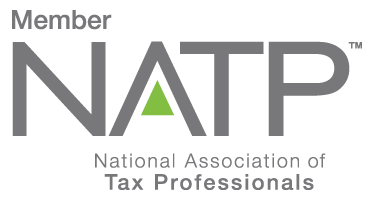Blog Archives
Making Time Elastic: What Does It Mean to File an Extension?
In a previous newsletter I referred to certain IRS rules that made it possible to seemingly “bend time” by allowing taxpayers to earn certain credits on their returns for expenditures paid outside of the tax year. Now we will look at a tax rule that allows us to “stretch time” by as much as six extra months!
This magic property is contained in the rules governing extensions. As the tax season comes to a close, many friends and clients find that they have still not received all of their tax documents, or have waited until too late to give them to me. They are unable to file a completed return by April 15 and wonder what it means when I tell them not to worry, we’ll just file an extension.
The first thing to understand about an extension is that it is not merely a request. Generally speaking, if the IRS receives Form 4868, Application for Automatic Extension of Time to File U.S. Individual Tax Return, by midnight on April 15, the taxpayer is automatically granted an additional six months to file their tax return. That means their return can be filed as late as October 15.
The second thing to understand is that Form 4868 only extends the amount of time granted to file the return. It does not extend the amount of time for paying taxes owed. If a taxpayer knows or suspects that he will owe taxes when the return is completed, he should pay as much of them as he can at the same time he files Form 4868; otherwise, he will be assessed standard late fees and interest for each month thereafter that payment is not received by the IRS.
The lone exception is something the IRS refers to as the “safe harbor” rule, which, in simplified terms, means that if you have paid 100% of the amount of tax you owed last year, even if you wind up owing more this year, there is no penalty.
Form 4868 is a very simple document and is routinely accepted by the IRS at this time of year. There is almost nothing you can do to cause the IRS to reject it. So, for certain taxpayers, it really can have the almost magical effect of “stretching time” for an extra six months, at least as far as filing your tax return is concerned.
Another thing you should know, at least if you are my tax client, is that I try very hard not to put you in a position of needing to file Form 4868 through no fault of your own. I have actually completed returns by April 15, even though I did not receive the tax documents until April 14. As long as a return is pretty simple, I can usually make that work, and so far I have never had to say to someone, “I just didn’t get around to your taxes, so we’ll have to file an extension.”
But there are circumstances where neither I nor the client can control when they receive all of their various tax statements. I have one client who is in a partnership, and every year the report of the partner’s share of profit or loss arrives months after tax season is over. We literally have no choice but to file an extension. Fortunately for him, that option exists, and he always benefits from it.
This year, I had to file extensions for about half a dozen clients. Most of them were due to their own procrastination about getting in touch with me, or because they didn’t provide me with all the necessary tax documents and needed extra time to dig up additional data. What a relief, for them and for me, that IRS rules allow them to stretch tax time for another twenty-six weeks!









